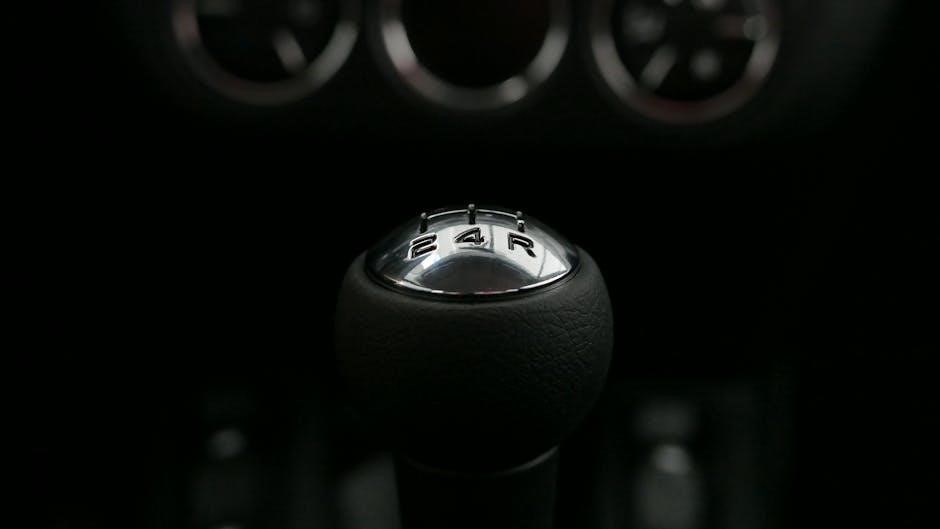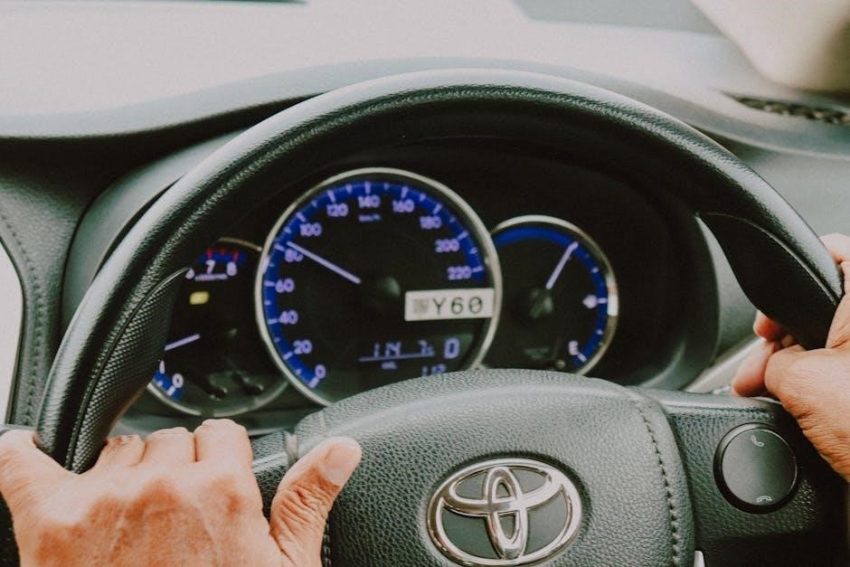The 2023 Minnesota Driver’s Manual is a comprehensive guide for road safety and licensing. It includes updates on fee increases, expanded license access, and study resources like practice tests and multilingual materials to help prepare for the DMV exam.
Overview of the Manual’s Purpose and Structure
The 2023 Minnesota Driver’s Manual is designed to educate drivers on traffic laws, road safety, and licensing requirements. It is divided into clear sections, covering topics such as road signs, driving laws, and safe practices. The manual also includes detailed application processes and updates on new regulations. Available in multiple formats, including audio and multilingual versions, it ensures accessibility for all learners. Its structured approach helps new and experienced drivers navigate Minnesota’s driving rules effectively.
Key Updates and Changes in the 2023 Edition
The 2023 Minnesota Driver’s Manual introduces several important updates, including fee increases for licenses and IDs, effective July 1st and October 1st. The Drivers License for All law, enacted on October 1st, expands access to licenses regardless of immigration status. Additionally, the manual now offers multilingual study resources, enhanced road sign explanations, and updated safe driving practices. These changes aim to improve accessibility, clarity, and road safety for all Minnesota drivers.
Eligibility Requirements for a Minnesota Driver’s License
All Minnesota residents, regardless of immigration status, are now eligible for a driver’s license under the Drivers License for All law, with exceptions for non-residents and valid out-of-state license holders.
Who Needs a Minnesota Driver’s License
Anyone operating a motor vehicle on Minnesota public roads must have a valid driver’s license. This includes all state residents, with exceptions for non-residents holding valid out-of-state licenses. The Drivers License for All law now allows undocumented residents to apply, provided they meet documentation requirements, such as showing two identity documents, one including their full name and date of birth. This ensures road safety and compliance with state regulations for all drivers.
Exceptions to the Requirement
Certain individuals may drive in Minnesota without a state license. Non-residents with valid out-of-state licenses are exempt. Additionally, those operating vehicles on private property or for agricultural purposes may not need a license. Military personnel and diplomats with proper identification are also exempt. These exceptions ensure the law remains fair while maintaining road safety standards. It’s important to verify specific criteria to determine eligibility under these exceptions.
Documentation Needed for Application
To apply for a Minnesota driver’s license, you must provide specific documentation. This includes proof of identity, such as a valid passport or certified birth certificate, and proof of residency, like a utility bill or lease agreement. Applicants must also show two documents proving their full name and date of birth. Additional documentation may be required for name changes or special licensing programs. Ensure all documents are valid and meet the state’s criteria for acceptance.
Types of Driver’s Licenses in Minnesota
Minnesota offers various driver’s licenses, including standard, commercial (CDL), motorcycle, and restricted/conditional licenses, each tailored to specific driving needs and requirements.
Standard Driver’s License
A standard driver’s license in Minnesota allows residents to operate non-commercial vehicles. Eligibility requires meeting age, residency, and documentation criteria. The 2023 updates include expanded access under the Driver’s License for All law, enabling all residents, regardless of immigration status, to apply. Applicants must provide two documents, one proving identity and date of birth, and pass vision, knowledge, and driving tests. This license is essential for legal driving privileges and ensures compliance with state regulations.
Commercial Driver’s License (CDL)
A Commercial Driver’s License (CDL) is required for operating heavy commercial vehicles in Minnesota. The 2023 manual outlines three classes: Class A (combination vehicles), Class B (heavy straight trucks), and Class C (small passenger vehicles or hazardous materials). Applicants must meet medical certification standards and pass knowledge and skills tests. Endorsements for specialized cargo, like hazardous materials or tankers, require additional testing. The CDL ensures professional drivers meet safety and operational standards, critical for public road safety and regulatory compliance.
Motorcycle License
A Motorcycle License in Minnesota allows operation of two- or three-wheeled vehicles. The 2023 manual details requirements, including a written test, vision screening, and riding skills assessment. Applicants must be at least 16 years old, complete a motorcycle safety course, and hold an instruction permit. The license is classified as an endorsement on a standard driver’s license. Additional endorsements may be needed for three-wheeled vehicles. Study materials and practice tests are available to prepare for the exams and ensure safe motorcycle operation.
Restricted and Conditional Licenses
Restricted and Conditional Licenses in Minnesota cater to drivers with specific limitations. These licenses allow driving under certain conditions, such as work-related travel or completing a rehabilitation program. Eligibility varies based on violations or court orders. Applicants must meet criteria like completing a driver improvement course or installing an ignition interlock device. These licenses help maintain mobility while ensuring public safety through monitoring and adherence to set restrictions.
Study Resources and Practice Tests
The 2023 Minnesota Driver’s Manual offers official study materials, including online practice tests, interactive flashcards, and multilingual resources to aid in exam preparation effectively.
Official Minnesota Driver’s Manual
The official 2023 Minnesota Driver’s Manual is the primary study resource for the DMV written test, covering essential topics like road signs, traffic laws, and safe driving practices. Available in print and digital formats, it includes sections tailored for commercial, regular, and motorcycle licenses. The manual also offers multilingual and audio versions to accommodate diverse learning needs. Key updates in the 2023 edition reflect changes in licensing policies and fees, ensuring applicants are well-prepared for the exam and informed about new regulations.
Online Practice Tests and Flashcards
Online practice tests and flashcards are valuable tools for studying the 2023 Minnesota Driver’s Manual. Platforms like Quizlet offer interactive flashcards covering key topics such as road signs, speed limits, and emergency protocols. These resources help reinforce knowledge and improve retention. Practice tests simulate the actual DMV exam, allowing users to assess their readiness and identify areas for further study. They are accessible online, making it easy to prepare for the test anytime, anywhere.
Audio and Multilingual Study Materials
The 2023 Minnesota Driver’s Manual is supported by audio and multilingual study materials to ensure accessibility for all learners. Audio versions of the manual allow users to study on the go, while multilingual resources cater to non-English speakers. The Department of Vehicle Services (DVS) offers a virtual assistant in English, Spanish, Somali, and Hmong. These tools aim to make studying convenient and inclusive, helping everyone prepare effectively for the DMV written test regardless of their language preference or learning style.

Minnesota Driving Laws and Regulations
Minnesota driving laws emphasize safety and responsible practices. Speed limits vary by road type, with two-lane highways having specific rules for passing. Headlights must be visible from a distance, and emergency vehicles require immediate attention. These regulations ensure orderly traffic flow and protect all road users.
Speed Limits and Passing Rules
Minnesota enforces specific speed limits based on road types. On two-lane highways with a posted speed limit of 55 mph or higher, drivers may increase their speed by 10 mph when lawfully passing another vehicle. Headlights must illuminate objects at least 500 feet ahead on high beams. Passing is only allowed when visibility is clear and safe, ensuring no oncoming traffic is within 1,000 feet. These rules aim to balance safety and efficient traffic flow.
Headlight and Visibility Requirements
Minnesota requires drivers to use headlights to ensure visibility and safety. When set on high beam, headlights must make objects visible from at least 500 feet away. Drivers must adjust headlights to avoid blinding others, especially when approaching oncoming traffic. Clean and functional headlight lenses are mandatory to maintain visibility. Fog lights may be used in low-visibility conditions but must be turned off when visibility improves to avoid obstructing other drivers.
Emergency Vehicle Protocols
When an emergency vehicle with flashing red lights and a siren approaches, drivers must yield the right of way. Pull over to a safe location, stop, and remain stopped until the emergency vehicle passes. Never block intersections or interfere with emergency vehicles. These protocols ensure public safety and allow emergency responders to reach their destinations quickly. Always follow these rules to comply with Minnesota driving laws and prioritize safety on the road.

Understanding Road Signs and Markings
Understanding road signs and markings is crucial for safe driving. They guide drivers on traffic laws, hazards, and navigation. Categories include regulatory, warning, guide, and construction signs, each serving specific purposes to ensure road safety and efficient travel.
Regulatory Signs
Regulatory signs enforce traffic laws and specify rules for drivers. Examples include speed limit signs, stop signs, and yield signs. These signs are typically rectangular and white with black text or symbols. They indicate legal requirements or restrictions, such as right-of-way rules, parking regulations, and traffic direction. Understanding and obeying regulatory signs is essential for maintaining order on the road and preventing violations. Familiarity with these signs ensures compliance with Minnesota traffic laws and enhances road safety.
Warning Signs
Warning signs alert drivers to potential hazards or changes in road conditions. They are typically diamond-shaped and yellow with black symbols or text. These signs indicate situations like curves, intersections, pedestrian crossings, or roadwork. They help drivers anticipate and prepare for upcoming conditions, enhancing safety. Examples include “Merge Ahead,” “School Zone,” and “Sharp Curve.” Recognizing and responding to warning signs is crucial for maintaining safe driving practices and avoiding accidents on Minnesota roads.
Guide and Construction Signs
Guide signs provide directional information to help drivers navigate roads and highways. They are typically rectangular and feature white text on a green or blue background. These signs indicate destinations, distances, and services like rest areas or gas stations. Construction signs, often orange and diamond-shaped, alert drivers to roadwork, detours, or lane closures. Both types of signs are essential for safe navigation and help drivers make informed decisions while traveling on Minnesota roads.

Safe Driving Practices
Safe driving practices emphasize staying alert, maintaining a safe distance, and adjusting speed in adverse weather. Always wear a seatbelt and avoid distractions while driving.
Defensive Driving Techniques
Defensive driving techniques focus on staying alert, maintaining a safe distance, and adjusting speed for road conditions. Always wear a seatbelt, avoid distractions like phones, and keep eyes on the road. Be prepared for emergencies and anticipate the actions of other drivers, pedestrians, and cyclists. Use headlights appropriately and stay visible to others. Defensive driving helps minimize risks and ensures a safer experience for all road users. Regular practice and awareness are key to mastering these essential skills.
Night Driving and Low Visibility Conditions
Night driving requires extra caution due to reduced visibility. Use high beams only when no other vehicles are nearby to avoid blinding others. Reduce speed and increase following distance to allow more time to react. Keep windshield and windows clean for clear vision. Be aware of pedestrians, cyclists, and animals that may be harder to see. In fog or heavy rain, use low beams and consider pulling over if visibility is severely limited. Stay alert and avoid distractions to ensure safety on the road.
Sharing the Road with Pedestrians and Cyclists
Drivers must always yield to pedestrians and cyclists, especially at crosswalks and intersections. Reduce speed and be prepared to stop when pedestrians are present. Maintain a safe distance when passing cyclists— 3 feet clearance is required. Be cautious at intersections and when opening vehicle doors, as cyclists may be approaching. Use turn signals to communicate your intentions and avoid distractions that could endanger vulnerable road users. Respect shared paths and bike lanes to ensure mutual safety.

Applying for Your Driver’s License
Gather required documents, complete the application form, and pay fees. Eligible residents can apply for standard or specialized licenses, with options for farm work or medical licenses.
Step-by-Step Application Process
To apply for a Minnesota driver’s license, prepare required documents, complete the application form, and submit it to the Driver and Vehicle Services (DVS). Pay the necessary fees, which increased in 2023. After processing, you will receive your license. Additional options include applying for specialized licenses, such as farm work or medical licenses, with specific documentation. Visit the DVS website or office for further assistance and to ensure compliance with updated regulations.
Required Forms and Fees
Applicants must provide proof of identity, residency, and legal status. Fees for licenses and IDs increased in 2023, with specific rates available on the DVS website. Payment methods include credit cards, cash, or checks. Additional forms may be required for specialized licenses, such as medical or farm work licenses. Ensure all documents are up-to-date, as expired or incorrect paperwork may delay processing. Check the DVS website for the most current fee schedule and required forms before applying.
Special Licensing Programs
Minnesota offers specialized licensing options to accommodate unique needs. A limited license allows driving for specific purposes, like work or school. Farm work licenses enable agriculture-related driving for those under 18. Medical licenses are issued for drivers with certain health conditions requiring restrictions. Each program has specific eligibility criteria and application processes. Visit the DVS website for detailed requirements and to apply for these specialized licenses, ensuring compliance with state driving regulations.
The 2023 Minnesota Driver’s Manual is your key resource for safe driving and licensing. Stay informed about updates and practice safe driving habits for lifelong road safety;
Final Tips for Success
Master the 2023 Minnesota Driver’s Manual by thoroughly studying road signs, safe driving practices, and updated laws. Practice with online tests and multilingual materials for better retention. Focus on defensive driving techniques to ensure safety on the road. Regularly review the manual to stay informed about licensing changes, such as fee updates and expanded access programs. Utilize flashcards and audio resources to reinforce learning. Stay confident and prepared for your exam and future driving experiences.
Staying Informed About Updates
Stay updated on the 2023 Minnesota Driver’s Manual by visiting the official DVS website and utilizing their multilingual virtual assistant. Regularly check for fee changes, legislative updates, and new licensing programs like the Driver’s License for All law. Ensure you have the latest version of the manual for accurate information. Follow official sources for updates on road safety, regulations, and application processes to maintain compliance and stay informed as a Minnesota driver.
